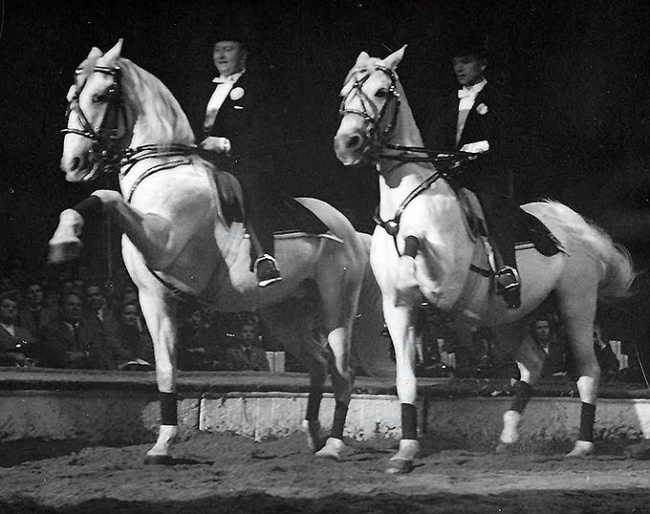
This article is a continuation of "Welcome to the Circus" - A New Series on Classical Dressage and the Circus and Part II - "Dressage Needs to be Visualised Love"
It is probably pretty unique that a talented rider leaves the Spanish Riding School for a life in the circus. It was exactly what Georg Wahl (1920-2013) did. He is best known and remembered for having been the lifelong trainer of Olympic Champion Christine Stückelberger and her internationally successful horses.
Headhunted for the Spanish Riding School
Wahl was born in 1920 in Upper Silesia where his father worked at the Stud of Kosel. In 1939 Georg became a member of the cavalry in the German Wehrmacht, the unified armed forces of Nazi Germany. He quickly became a sergeant and a year later competed at the show in Insterburg (today Tschernjachowsk) in East Prussia. There Alois Podhajsky, the head of the Spanish Riding School as of 1939, spotted the young talent. Podhajsky was competing internationally in dressage at that time on Nero xx.
Subsequently Wahl was detached to the Spanish Riding School in Vienna where he met the bit older Franz Rochowanksy, who would also later become a respected international trainer of dressage Olympians in Great Britain. Georg Wahl showed extraordinary talent working with horses.
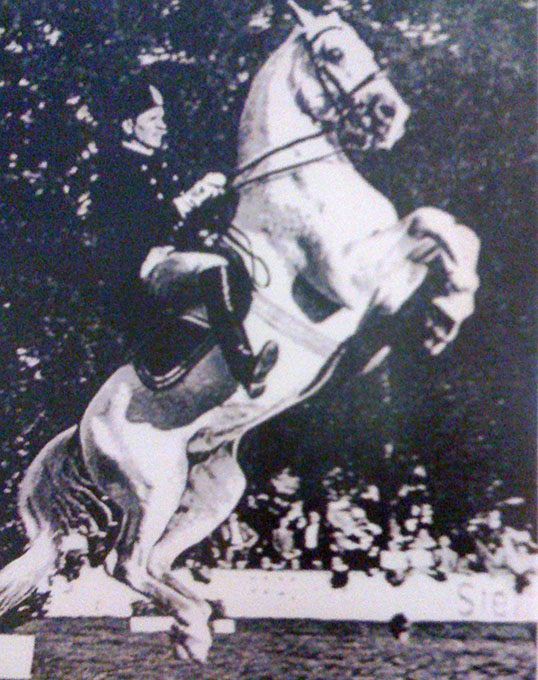
He experienced the bombings in Vienna as well as the evacuation of the whole school to Upper Austria in order to rescue the horses from Soviet occupation. For the Lipizzans it took a decade until they could finally return to Vienna in 1955. For Wahl it meant a farewell from Austria’s capital for a much longer time. After taken part in foreign journeys of the SRS to Switzerland and the USA, he decided to leave the Spanish Riding School for a life in the circus.
Stückelberger Looks Back on Wahl's Time in the Circus
Eurodressage's Silke Rottermann interviewed Christine Stückelberger about the reasons for leaving the SRS for the circus. In Switzerland Wahl learnt a new level of horse training in his year-long collaboration with Fredy Knie senior.
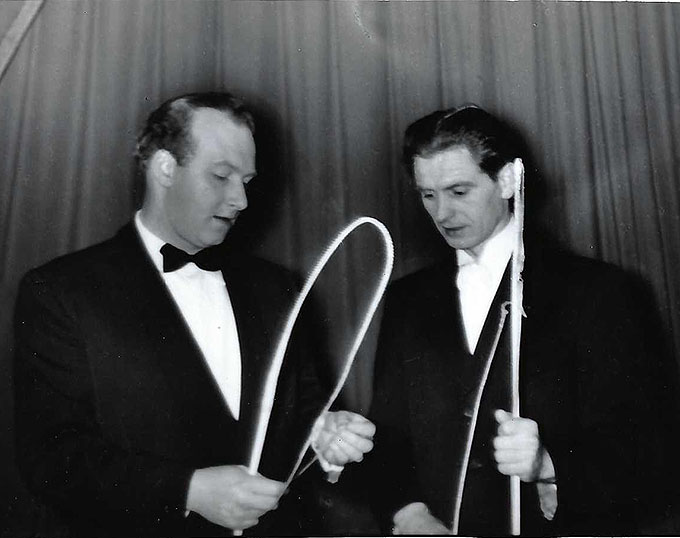
shows. Both men, the same age and blessed with passion
and feeling for horses in abundance, learnt a lot from each
other.
CS: The Spanish Riding School was at the same time in Switzerland when Circus Knie had shows. Georg watched one of the shows and thought that the horses showed nice piaffes, also in the sense of the horses being calm and supple. He really liked it.
ED: But wasn’t it a certain contradiction that one of the most talented young riders of the SRS left this world famous institution for the circus?
CS: At that time Georg was discontent in Vienna which had nothing to do with the institution itself. He returned there as chief rider in 1967. So when he got the opportunity to change to Circus Knie, he took it with both hands.
ED: You often read both men had learned a lot from each other. In which regards?
CS: Fredy Knie was a circus rider his entire life. From Georg he learnt the truly classical equitation. I mean the degree of submission which we dressage riders want. Back then Knie’s horses of course showed all the circus movements, for example the Spanish walk besides other High School movements. From Georg he learnt how to systematically supple the horses so that they work through their whole body.
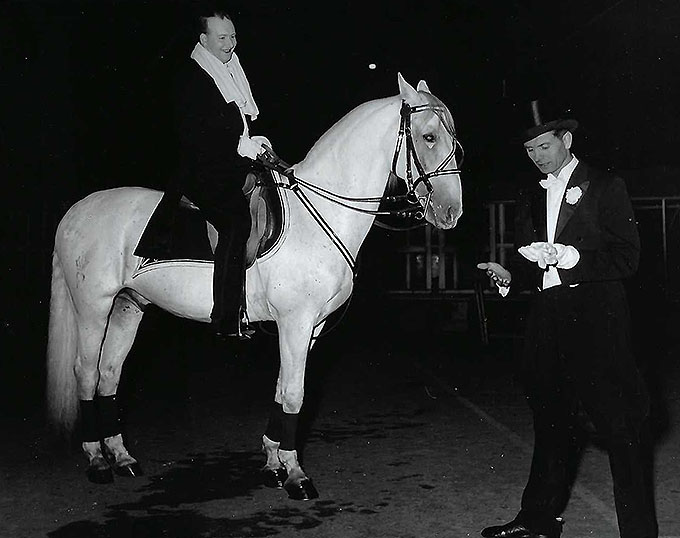
National Circus Knie. Fredy Knie senior on Siglavy Trompeta
who gets a treat from Wahl.
And then how to touch the horse in hand. At the SRS Georg had learnt how to touch the hind-legs, but not to touch elsewhere. On the croup, at the tummy, on the back, at the front legs to make the horse show the desired reaction. He had not known this variety of spots before and it truly fascinated him. For example if the horse did not lift the front-leg, that one touches here and there, that there were different spots which worked and helped the horse to understand what he wanted.
ED: Did both men stay in regular contact after Wahl left the circus?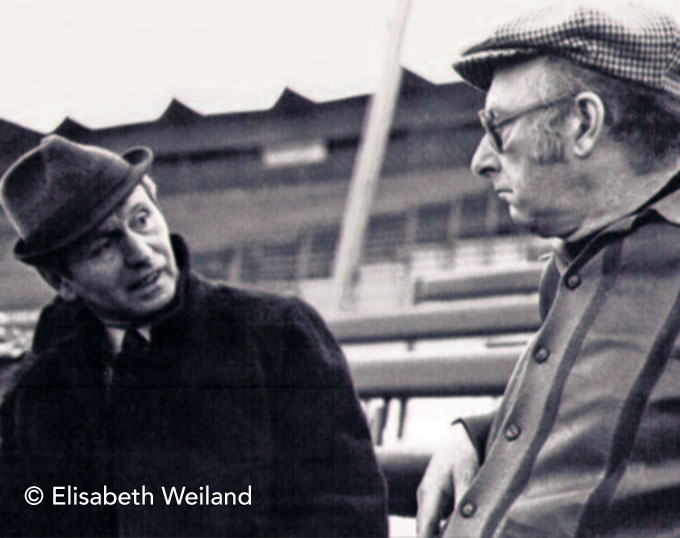
ED: Did they also sometimes exchange ideas about handling problems in the training of certain horses?
CS: Not in the sense that they phoned each other to ask advice from the other in a special case. But when they met, they exchanged and explained. That way they discussed certain horses and their training.
ED: Some deride circus riding, but Knie was generally widely respected. What was the reason and how did Fredy Knie senior muster the classical and the spectacular?
CS: Knie’s riding and his training were highly respected because it was based on classical principles. The horses were submissive and supple. The riding was absolutely beautiful and Fredy had a lot of feeling. He truly brought classical dressage riding and the spectacular, which is typical for the circus, together.
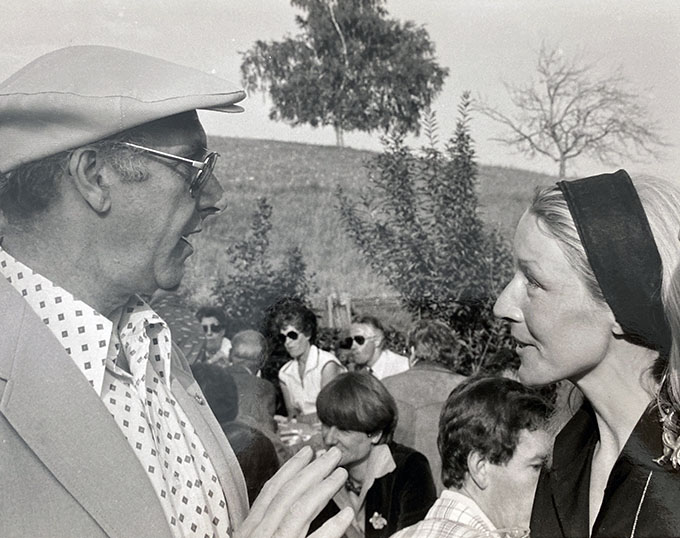
Hasenberg near St. Gall. His old friend Fredy Knie senior
came for the opening party. Here with Christine Stückelberger.
CS: He was a horseman through and through. I always admired him. He was not only very skilful, he was also able to explain it. He was open minded and loved to share his knowledge.
ED: Which influence did Fredy Knie senior have on dressage competition in Switzerland?
CS: Ulrich Lehmann was his student in the first place, but he also helped several other Swiss riders. Today this is unthinkable that a dressage rider would turn to a circus rider for advice. On the other hand there is also almost nobody to turn to anymore.
ED: Fredy Knie senior died almost 20 years ago. What remains of his legacy?
CS: What remains is the beautiful and soft riding. Beauty and harmony still play a major role at Circus Knie. You can recognize it in Fredy Knie junior’s grandson Ivan, he has incredible feeling.
Chief Rider at the Spanish Riding School
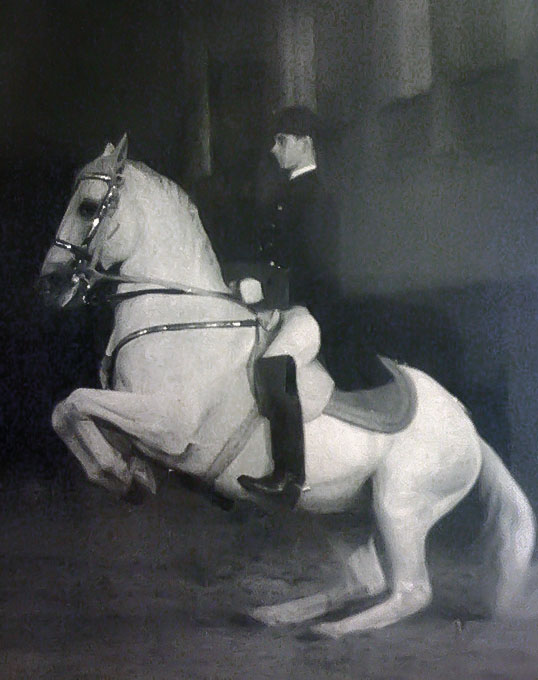
When the combination of working for the institution and training his competing students became too much, Wahl went independent near Salzburg.
In 1979 he bought his property „Hasenberg“ in East Switzerland where he lived with Christine until his death in November 2013.
By Silke Rottermann for eurodressage.com.
Rottermann interviewed Christine Stückelberger for Eurodressage in Heimsheim on 27 March 2022.
Photos kindly provided with permission of Knie Media and © Elisabeth Weiland
Related Links
"Welcome to the Circus" - A New Series on Classical Dressage and the Circus
Welcome to the Circus - Part II - "Dressage Needs to be Visualised Love"
Eurodressage Photo Database: Georg Wahl